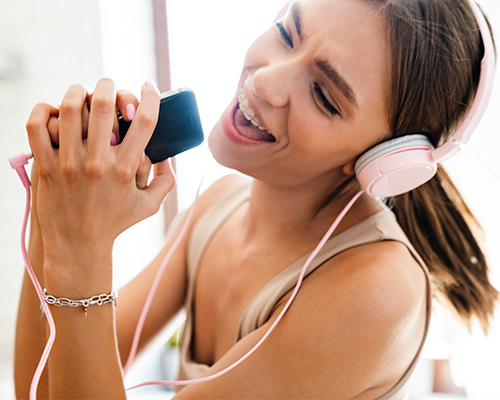News

Audio
The advantages of rechargeable hearing aids
Rechargeable hearing aids, goodbye to batteries!
Rechargeable hearing aids have been on the market for a long time, but to date they were not optimally used, as the battery lasted no more than 2-4 hours. But today the landscape has changed and on the market there are already rechargeable hearing aids that last up to 24 hours on a single charge.
The battery in these hearing aids is made of Lithium-Ion, a material that has a much greater capacity to store energy than other materials used so far. In fact, many mobile or car manufacturers are also using it, because it has been proven that the battery lasts much longer. Hearing aid batteries are small and also consume very little. This allows a hearing aid to be charged in 3 hours and can be used for a whole day:
Furthermore, lithium-ion batteries typically last around 5-6 years, just the recommended time for changing a hearing aid.
What advantages do rechargeable hearing aids have at the hearing level?
The hearing technology used in rechargeable hearing aids is exactly the same as what we use in other hearing aids. The only thing that differentiates a rechargeable hearing aid from a conventional one is the use of battery or batteries.
What technological and functional advantages do rechargeable hearing aids have over battery-powered ones?
Usability: the user does not have to be aware of the batteries and, above all, it facilitates handling. Many times there are confusions to put the batteries in and with the rechargeable ones all you have to do is charge them every night in their charger case. These hearing aids work very well, for example, with people who have osteoarthritis or do not see well.
The forecast: rechargeable hearing aids give you a warning before turning off. Half an hour before running out of battery they warn the user of their low battery level, which allows them to anticipate the next charge. In addition, depending on the hearing aid model, you can also check the battery status through a mobile application.
"Eco-friendly": rechargeable hearing aids are more sustainable than battery-operated ones. They are powered by an electric current through a USB, which eliminates a multitude of highly polluting waste for the environment, such as batteries. Caring for the environment benefits us all!
Savings: Conventional hearing aids use an average of 60 batteries per year, depending on the model. Can you imagine the savings it represents throughout its useful life (between 5-7 years)?
The best rechargeable hearing aids are here at Compuboutique.

Audio
Can hearing aids get wet?
Some hearing aid users tell us their wish for a manufacturer to launch a model with which they can swim. Unfortunately, we always have to tell you that it is something that will take time to achieve. On the other hand, people who buy hearing aids for the first time often ask us if they can get wet. The short answer would be NO although in reality it would be a NO but with nuances. Next, we will explain how hearing aids are related to humidity.
Hearing aids are endurance tested
The design of a new hearing aid model involves a series of new hearing-oriented technologies that are passed and failed to ensure the best result. What is not so obvious is that these new models also endure a large number of tests to verify their merely physical resistance. Manufacturers are continually trying to improve the durability of their appliances, as well as the ability to withstand the most extreme environments. In this way, each hearing aid model is classified according to a degree of IP protection, which is a scale established by official international regulations.
How do my hearing aids get in the water?
As a general rule, a hearing aid should not get wet. This statement should be viewed from the perspective that they should not be submerged in water or that, for example, we should not get into the shower with them. Even so, they do support certain situations where water is very present. For example, if it starts to rain and we are not carrying an umbrella, it is not necessary to run off the headphones. It would only be worrisome in the event of a torrential rain. There would be no problem if they were accidentally splashed with water, as long as it dries right afterwards. Basically the limitation is that no water gets inside the hearing aid.
Hearing aids in humid environments
Before we discussed the relationship between hearing aids and water, but another factor to take into account is that of humidity. If this is maintained over time, it can end up affecting the internal electronics of the hearing aid or some of its physical parts, such as the elbow in the BTE type, without really any drop of water entering it. And what do we understand by humidity maintained over time? An example would be living in a particularly humid climate. Another typical example would be that of a person who regularly sweats a lot, either due to his own metabolism or because he practices sports every day. We know that, at first glance, this seems like a difficult problem to solve but nothing could be further from the truth.
The best headphones are here at Compuboutique, take a tour of the store.
